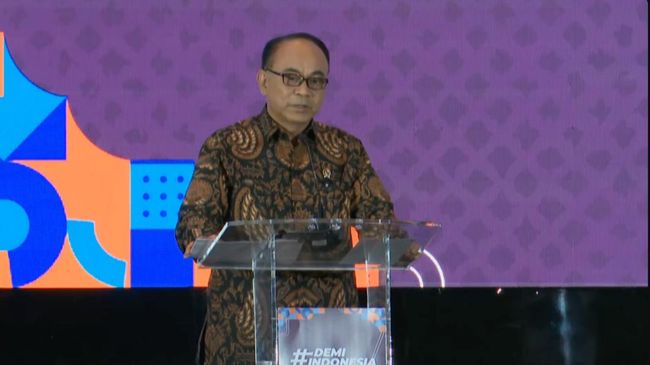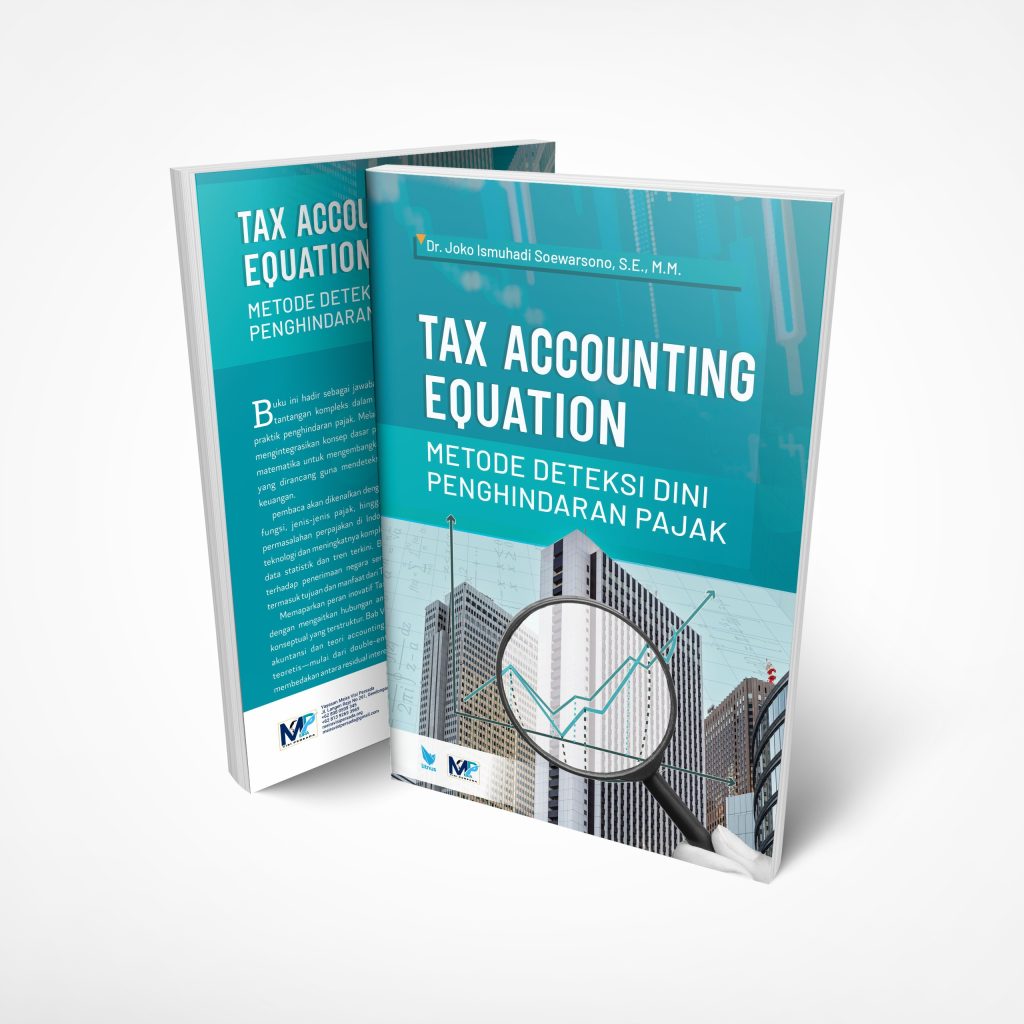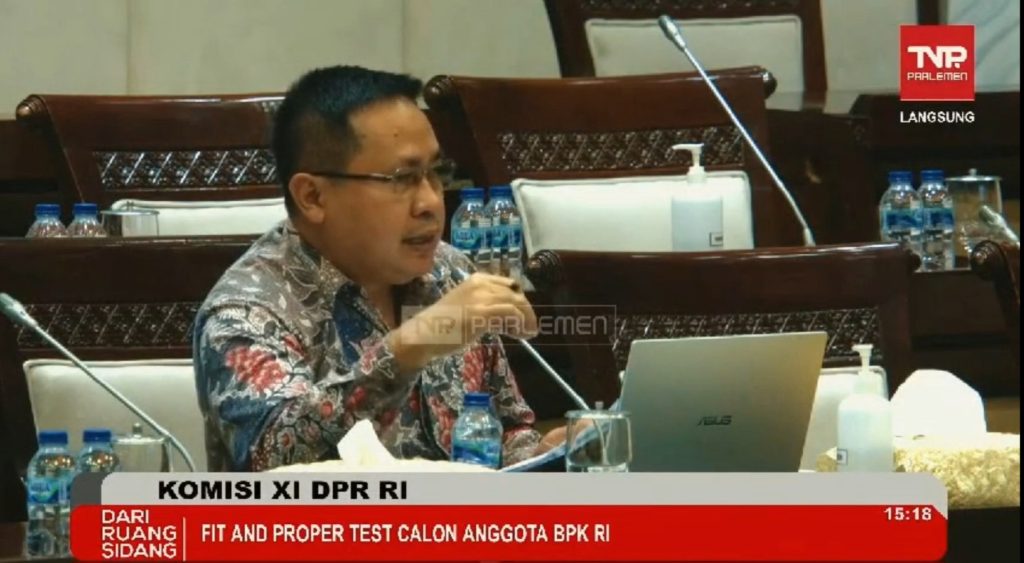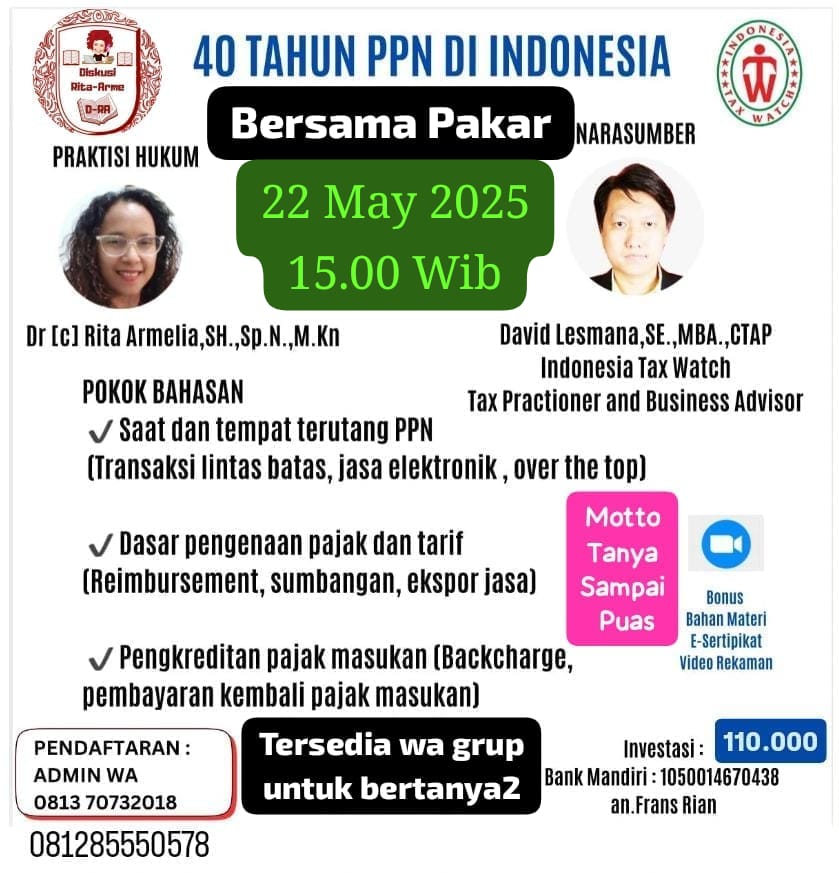
Analysis of the Tax Accounting Equation and Article 4 Paragraph (1) of the Indonesian Income Tax Law
- Ekonomi
Sunday, 06 April 2025 03:26 WIB

Jakarta, fiskusnews.com:
1. Introduction
Accounting equations serve as the bedrock of financial reporting, providing a structured framework for understanding a company’s financial position and performance. The fundamental accounting equation, consistently defined across various financial resources, establishes that a company’s total assets are equivalent to the sum of its liabilities and shareholders’ equity. This principle underpins the double-entry accounting system, ensuring that for every debit entry, a corresponding credit entry exists, thus maintaining the balance of the balance sheet. The balance sheet, in essence, is a detailed presentation of this equation, offering a snapshot of a company’s financial standing at a specific point in time, outlining its resources (assets) and the claims against those resources (liabilities and equity).
The user query introduces a specific formulation termed the Tax Accounting Equation (TAE): Revenue = Expenses + Assets – Liabilities. While standard accounting practices utilize the basic equation and its expanded forms that incorporate revenue and expenses, this particular algebraic arrangement is not immediately recognizable as a standard accounting identity. Expanded forms typically illustrate how operational activities, reflected in revenue and expenses, influence the equity component of the balance sheet over a period. The absence of this exact TAE formulation in fundamental accounting definitions prompts a critical examination of its potential context and application, particularly in relation to taxation.
This report aims to analyze a potential discrepancy or loophole within Article 4 paragraph (1) of the Indonesian Income Tax Law that this specific formulation of the TAE might reveal. Understanding the interplay between accounting principles and the specific tax regulations within the Indonesian context is crucial for identifying such potential issues. Tax accounting in Indonesia operates under its own set of rules, which, while often drawing from commercial accounting practices, can diverge significantly due to the specific objectives of tax law, such as revenue generation and economic policy enforcement. Therefore, the direct application of a financial accounting equation to tax matters without careful consideration of the specific legal framework could lead to misinterpretations regarding potential loopholes.
2. Fundamentals of the Tax Accounting Equation (TAE)
2.1 Defining the Basic Accounting Equation and its Expanded Forms:
The basic accounting equation, Assets = Liabilities + Equity, is a cornerstone of accounting, representing the fundamental relationship between a company’s resources (assets), its obligations to external parties (liabilities), and the owners’ residual interest in those resources (equity). Assets encompass items of value owned or controlled by the business with the expectation of future economic benefits. Liabilities represent debts or obligations owed to other companies or individuals. Equity signifies the owner’s stake in the business, calculated as the difference between assets and liabilities. This equation is the foundation of the double-entry accounting system, where every financial transaction is recorded in at least two accounts, with total debits always equaling total credits, ensuring the equation remains balanced.
To provide a more comprehensive view of a company’s financial activities, the basic accounting equation is often expanded to include revenue and expenses. A common expanded form is Assets = Liabilities + Owner’s Equity + Revenue – Expenses – Draws. Another rearrangement can be seen as Assets + Expenses = Capital + Liabilities + Income. These expanded equations bridge the gap between the balance sheet and the income statement by illustrating how the operational performance of a business (through revenue and expenses) impacts the owner’s equity over a period. Revenue, representing the income generated from normal business operations, increases equity, while expenses, the costs incurred to generate that revenue, decrease equity.
The user-provided Tax Accounting Equation, Revenue = Expenses + Assets – Liabilities, can be rearranged algebraically to Revenue – Expenses = Assets – Liabilities. Recognizing that Revenue – Expenses represents net income or profit, and Assets – Liabilities represents net assets, which is equivalent to equity, the TAE essentially states: Net Income (Profit) = Equity. While there is a conceptual link between a company’s profitability over time and its accumulated equity, this simplified equation does not fully capture the complexities of equity changes. Factors such as initial capital contributions, additional investments by owners, and distributions to owners (dividends or draws) also influence equity and are not explicitly accounted for in this formulation.
2.2 Components of the TAE and Their Interrelationships:
The Tax Accounting Equation comprises four key components: Revenue, Expenses, Assets, and Liabilities. Revenue is the inflow of economic benefits during a period arising in the course of the ordinary activities of an entity when those inflows result in an increase in equity, other than increases relating to contributions from equity participants. Expenses are decreases in economic benefits during the accounting period in the form of outflows or depletions of assets or incurrences of liabilities that result in decreases in equity, other than those relating to distributions to equity participants. Assets are resources controlled by the entity as a result of past events and from which future economic benefits are expected to flow to the entity. Liabilities are present obligations of the entity arising from past events, the settlement of which is expected to result in an outflow from the entity of resources embodying economic benefits.
These components are intricately linked through the double-entry accounting system. Every financial transaction impacts at least two of these components, with the fundamental principle being that the accounting equation must always remain in balance. For instance, when a company generates revenue from a sale, it typically increases either cash (an asset) or accounts receivable (another asset), and simultaneously increases its equity through retained earnings (part of owner’s equity). Similarly, incurring an expense, such as paying salaries, reduces cash (an asset) and decreases equity. Taking out a loan increases both cash (an asset) and liabilities (loan payable). This interconnectedness ensures a system of checks and balances in financial record-keeping.
2.3 Purpose and Limitations of the TAE in Financial Reporting and Tax Accounting:
The primary purpose of the basic and expanded accounting equations in financial reporting is to provide a structured and logical framework for recording, classifying, and summarizing a company’s financial transactions. These equations ensure that the balance sheet remains balanced, reflecting the fundamental relationship between a company’s resources and the sources of its financing. They also offer valuable insights into a company’s financial position (assets, liabilities, and equity) and its performance over time (through the inclusion of revenue and expenses in the expanded forms).
However, the user-provided TAE, while highlighting a relationship between profitability and net worth, has limitations in fully representing the complexities of financial reporting. It simplifies the intricate dynamics of equity changes by not explicitly accounting for owner contributions, withdrawals, and other factors that influence equity. Furthermore, and critically for this analysis, there is a fundamental distinction between financial accounting and tax accounting. Financial accounting aims to provide a true and fair view of a company’s financial position and performance to a wide range of stakeholders, adhering to established accounting standards. Tax accounting, on the other hand, is specifically focused on determining taxable income and tax liabilities in accordance with the rules and regulations set forth by tax laws. As experts in Indonesian tax law emphasize, tax regulations can and often do override general accounting principles when it comes to determining tax obligations. Therefore, a financial accounting equation, in any form, may not directly translate to the calculation of taxable income under Indonesian law.
3. Overview of Indonesian Income Tax Law and Article 4 Paragraph (1)
3.1 General Principles of Indonesian Income Tax Law:
The Indonesian tax system operates on a self-assessment basis, where taxpayers are responsible for calculating, paying, and reporting their own tax obligations. This system places a significant onus on taxpayers to accurately understand and apply the relevant tax laws and regulations. The fundamental basis for income taxation in Indonesia is taxable income, which is broadly defined as any additional economic capacity received or accrued by the taxpayer during a tax year. This income is then subject to different tax rates depending on the nature of the taxpayer (corporate or individual) and the amount of income. For corporations, a general tax rate of 22% applies, while individual income is taxed at progressive rates up to 35%. Compliance with these tax regulations is paramount, and failure to do so can result in penalties and legal repercussions. The self-assessment nature of the system underscores the importance of a clear and comprehensive definition of taxable income.
3.2 Exact Text of Article 4 Paragraph (1) of the Indonesian Income Tax Law:
Article 4 paragraph (1) of the Indonesian Income Tax Law (Law No. 36 of 2008, as amended) states: “(1) Yang menjadi objek pajak adalah penghasilan, yaitu setiap tambahan kemampuan ekonomis yang diterima atau diperoleh Wajib Pajak, baik yang berasal dari Indonesia maupun dari luar Indonesia, yang dapat dipakai untuk konsumsi atau untuk menambah kekayaan Wajib Pajak yang bersangkutan, dengan nama dan dalam bentuk apa pun…”. This translates to: “(1) The object of tax is income, which is any additional economic capacity received or accrued by the Taxpayer, either from Indonesia or from abroad, which can be used for consumption or to increase the wealth of the Taxpayer concerned, under any name and in any form…”. This broad definition of income is consistently reflected across various sources discussing Indonesian tax law. The use of expansive language such as “any additional economic capacity” and “under any name and in any form” clearly indicates the legislature’s intention to encompass a wide spectrum of income sources within the tax base.
3.3 Key Provisions and Principles Related to Taxable Income:
The broad definition of taxable income in Article 4 paragraph (1) is further elaborated upon by providing a non-exhaustive list of what constitutes income. These include: compensation for work or services, such as salaries, wages, allowances, honorariums, and other benefits; profits derived from business activities; gains from the sale or transfer of assets, including property; income from capital, such as dividends, interest, royalties, and rent; and other income, including prizes, awards, pensions, periodic payments, and income from debt relief. The fundamental principle underlying this provision is the taxation of any increase in a taxpayer’s economic capacity, regardless of its source or form, provided that it can be used for consumption or to increase the taxpayer’s wealth. This principle aims to capture all forms of economic benefit accruing to a taxpayer within a given tax period. The detailed enumeration of various income sources serves to illustrate the practical application of this broad principle, aiming to provide clarity and reduce ambiguity regarding what is subject to income tax in Indonesia.
4. Analyzing the Potential Loophole
4.1 TAE Interpretation and Discrepancy with Article 4(1):
The Tax Accounting Equation, Revenue = Expenses + Assets – Liabilities, when rearranged to Profit = Equity, presents a simplified relationship that, if directly applied to tax matters, could potentially lead to discrepancies with the broad definition of taxable income in Article 4 paragraph (1). While accounting profit reflects the increase in equity from operational activities (revenue less expenses), it might not perfectly align with the specific rules for income recognition and expense deductibility mandated by Indonesian tax law.
Consider a scenario where a company generates substantial revenue but simultaneously invests heavily in assets financed by debt. According to the TAE, the profit would contribute to an increase in equity (net assets). However, under Indonesian tax law, while the revenue is likely taxable in the current period, the mere acquisition of an asset funded by a loan does not necessarily generate an immediate taxable benefit. The tax advantages associated with the asset, such as depreciation deductions, are typically realized over the asset’s useful life. The TAE, focusing on the immediate relationship between profit and equity, might not capture this timing difference in the recognition of economic benefit for tax purposes.
Similarly, expenses incurred to generate future revenue, such as significant marketing campaigns or research and development costs, would reduce current accounting profit under the TAE. However, Indonesian tax law might have specific rules regarding the immediate deductibility of such expenses, potentially requiring them to be capitalized and amortized over time. This difference in the timing of expense recognition between accounting practices and tax regulations could lead to a divergence between the profit calculated using the TAE and the taxable income as determined under Article 4 paragraph (1) and its related provisions.
4.2 Potential Scenarios Leading to Reduced Taxable Income:
Several scenarios could illustrate how a focus solely on the accounting profit derived from the TAE might lead to a perceived reduction in taxable income that is not fully aligned with the broad intent of Article 4 paragraph (1).
One such scenario involves aggressive liability management. A company might artificially inflate its liabilities, for example, through non-arm’s-length loans with excessive interest payments to related parties, to reduce its reported accounting profit as per the TAE. While assets might also increase due to the loan, the net impact on equity (and thus the implied profit) could be lower. Although the TAE would still balance, Indonesian tax law has measures in place, such as transfer pricing rules and limitations on the deductibility of excessive interest expenses, to prevent such practices from unduly reducing taxable income.
Another scenario could involve the strategic management of asset valuation and depreciation. By manipulating the estimated useful lives or salvage values of assets, a company could influence its depreciation expense, thereby affecting its accounting profit as reflected in the TAE. While the equation would remain balanced, the reported profit might not accurately represent the company’s true economic capacity for tax purposes. However, Indonesian tax law prescribes specific depreciation methods and asset classifications with defined useful lives, which limits the flexibility companies have in using depreciation to significantly reduce taxable income.
Finally, as previously mentioned, differences in the timing of revenue and expense recognition between accounting standards and tax regulations represent a significant area where the profit derived from the TAE might not accurately reflect taxable income. For instance, accounting principles might require revenue to be recognized when earned, while tax rules might stipulate recognition upon receipt of cash. Similarly, the deductibility of certain provisions or contingent liabilities might be allowed under accounting but not for tax purposes until the liability is actually incurred and paid. These timing differences, if strategically managed, could potentially lead to a lower taxable income than what the broad definition in Article 4 paragraph (1) might intend to capture.
5. Expert Analysis and Interpretations
5.1 Views of Indonesian Tax Experts on Accounting Principles and Tax Law:
Indonesian tax experts consistently emphasize that while commercial accounting provides a crucial foundation for financial reporting, tax accounting operates under a distinct set of rules and regulations dictated by Indonesian tax law. As highlighted, tax accounting in Indonesia is specifically designed to determine the amount of tax payable in accordance with these laws, and in cases of conflict, tax regulations take precedence over general accounting standards such as PSAK. The concept of “fiscal correction” is central in Indonesian tax practice, representing the adjustments necessary to reconcile the differences between financial statements prepared under commercial accounting standards and those prepared for tax purposes. These differences arise because certain items of revenue and expense might be treated differently under tax law compared to accounting standards. Furthermore, experts note that accounting often follows the principle of substance over form, while tax authorities may prioritize the legal form of a transaction, which can lead to further discrepancies in treatment. Therefore, applying a general financial accounting equation like the TAE directly to determine taxable income in Indonesia without considering these specific tax rules and expert interpretations would be inappropriate and potentially misleading.
5.2 Discussions on TAE or Similar Concepts in Indonesian Tax Context:
A review of the provided material indicates that the specific formulation of the Tax Accounting Equation (Revenue = Expenses + Assets – Liabilities) is not a recognized term or formula within the context of Indonesian tax law or expert analysis. The discussions primarily revolve around the basic accounting equation and its expanded forms as fundamental principles of financial accounting. Taxable income in Indonesia is determined based on the definitions and rules explicitly provided within the Income Tax Law and its related regulations, rather than through algebraic manipulations of general accounting equations. This suggests that the TAE, as presented, is likely a conceptual tool for analysis rather than a standard methodology employed in Indonesian tax practice. Tax law typically defines the tax base through specific provisions outlining what constitutes income and what deductions are permissible, and taxpayers are expected to adhere to these specific rules when calculating their tax liabilities.
5.3 Tax Avoidance and Earnings Management in Indonesia:
The Indonesian tax landscape, like many others, faces the challenge of tax avoidance, where companies employ various strategies to legally minimize their tax burden. These strategies can include practices such as thin capitalization, transfer pricing, treaty shopping, and the use of tax havens. Experts have also noted the potential for tax avoidance to be used as a tool for earnings management, where financial figures are manipulated to reduce reported taxable income. Gaps or perceived loopholes in tax legislation can create opportunities for such practices. Given this context, any interpretation of an accounting equation that could lead to a significant reduction in taxable income would likely be viewed with scrutiny by Indonesian tax authorities, who are continuously working to close loopholes and ensure fair tax collection. While tax planning within legal boundaries is permissible , strategies that aggressively exploit discrepancies between accounting principles and tax law to unduly minimize tax liabilities are likely to face challenges from the tax authorities.
6. Legal Precedents and Amendments
6.1 Reported Cases or Legal Challenges:
The provided research material does not contain specific instances of reported cases or legal challenges in Indonesia that directly address the application of the TAE in the context of Article 4 paragraph (1) of the Indonesian Income Tax Law. One snippet discusses a tax planning strategy related to VAT and Article 4(2), but this is distinct from the current query. The absence of such specific legal precedents in the provided material might suggest that the alleged loophole, as framed by the TAE, has not been a primary subject of litigation or formal legal challenges in Indonesia, at least not in the publicly available information within this research set. It is possible that the issues raised by the TAE are addressed through the general interpretation and enforcement of existing tax regulations rather than specific legal battles centered on this particular equation. Further dedicated legal research beyond these snippets would be necessary to definitively ascertain the presence or absence of relevant case law.
6.2 Proposed Amendments to Article 4 Paragraph (1):
While the Indonesian Income Tax Law has been amended over time, as evidenced by references to different versions of the law and the enactment of the Law on the Harmonization of Tax Regulations , the provided snippets do not indicate any specific amendments to Article 4 paragraph (1) that were directly aimed at addressing a potential loophole arising from the TAE. The amendments mentioned generally relate to broader tax policy changes, such as adjustments to tax rates and the treatment of specific types of income. The lack of targeted amendments to Article 4 paragraph (1) concerning the TAE might imply that the Indonesian tax authorities have not identified this specific interpretation as a significant loophole requiring legislative intervention, or that they believe existing regulations and enforcement mechanisms are sufficient to address any potential issues arising from discrepancies between accounting profit as suggested by the TAE and taxable income as defined by law.
7. Different Perspectives and Interpretations
7.1 TAE as a Significant Loophole vs. Matter of Interpretation:
Whether the Tax Accounting Equation reveals a significant loophole in Article 4 paragraph (1) of the Indonesian Income Tax Law is a matter of perspective and interpretation.
From one perspective, if the simplistic application of the TAE (Profit = Equity) allows companies to consistently underreport their taxable income, especially when their economic capacity has clearly increased according to the broad definition in Article 4 paragraph (1), then it could be argued that the TAE highlights a loophole or an unintended consequence. This might occur if certain increases in wealth, such as substantial revenue generation leading to asset accumulation even if financed by debt, are not adequately taxed due to a focus solely on the accounting profit figure derived from the TAE.
However, another perspective is that the Indonesian tax system has a comprehensive framework of specific rules and regulations for determining taxable income, which tax authorities would prioritize over a general accounting equation. Any perceived discrepancy might simply be a result of the differences between general accounting principles and the specific requirements of Indonesian tax law regarding income recognition, expense deductibility, and the treatment of assets and liabilities. Taxpayers attempting to rely solely on the TAE for tax calculation would likely need to justify their approach within this existing legal framework.
Furthermore, companies might utilize the principles reflected in the TAE as a part of their legitimate tax planning strategies to minimize their tax burden within the bounds of Indonesian tax law. This would not necessarily constitute the exploitation of a loophole but rather a strategic application of existing regulations. The key determinant of whether the TAE reveals a loophole lies in whether its application leads to tax avoidance that contravenes the legislative intent of Article 4 paragraph (1) and cannot be adequately addressed by the specific provisions of Indonesian Income Tax Law.
8. Proposed Solutions and Recommendations
If the application of the TAE is deemed to create a significant and unintended reduction in taxable income that undermines the principles of Article 4 paragraph (1), the following potential solutions or recommendations could be considered:
- Clarification and Guidance from the Directorate General of Taxes (DGT): The DGT could issue specific guidelines or regulations clarifying how the relationship between accounting profit (as potentially implied by the TAE) and taxable income should be interpreted, particularly in scenarios involving substantial changes in assets and liabilities. This would provide greater certainty to taxpayers and help prevent interpretations that could lead to unintended tax advantages.
- Enhanced Scrutiny during Tax Audits: Tax auditors could be specifically trained to examine the relationship between a company’s reported profit, its asset and liability movements, and its overall economic capacity as reflected in its financial statements. This focused scrutiny would help ensure that taxable income is being reported in accordance with the spirit and letter of Article 4 paragraph (1) and related regulations.
- Review and Potential Amendment of Specific Tax Regulations: If specific instances arise where the application of the TAE consistently results in unintended tax benefits that cannot be addressed through interpretation or enforcement of existing laws, a review and potential amendment of the relevant tax regulations might be necessary. This could involve refining rules related to income recognition, expense deductibility, or the treatment of specific types of assets and liabilities.
- Emphasis on Economic Substance: Tax authorities could further emphasize the principle of taxing the economic substance of transactions over their legal form. This approach would involve looking beyond the accounting presentation in the TAE to assess the actual increase in the taxpayer’s economic capacity, aligning more closely with the broad definition of income in Article 4 paragraph (1).
9. Conclusion
The Tax Accounting Equation (Revenue = Expenses + Assets – Liabilities, implying Profit = Equity) represents a rearrangement of fundamental accounting principles but is not a standard formula explicitly utilized in Indonesian Income Tax Law for tax calculation. The potential for a loophole arises from the fact that accounting profit, as suggested by the TAE, may not always perfectly align with taxable income as broadly defined in Article 4 paragraph (1) of the Indonesian Income Tax Law and its associated regulations. If the TAE were used as the primary determinant of taxable income without considering the specific rules of Indonesian tax law regarding income recognition, expense deductibility, and the treatment of assets and liabilities, it could potentially lead to an underreporting of taxable income and a consequent reduction in tax revenue. However, the comprehensive definition of income in Article 4 paragraph (1) and the existence of specific tax regulations and enforcement mechanisms are likely intended to mitigate such unintended outcomes.
Whether the TAE reveals a significant loophole is a matter of interpretation. It could be argued that any perceived discrepancy is simply a reflection of the inherent differences between general accounting principles and the specific requirements of tax law, or it could be viewed as a tool for tax planning within the existing legal framework. A genuine loophole would likely exist only if the application of the TAE consistently allows for tax avoidance that clearly contravenes the legislative intent of Article 4 paragraph (1) and cannot be adequately addressed by current regulations and enforcement.
To address any potential issues, the Indonesian tax authorities could consider providing clearer guidance on the relationship between accounting profit and taxable income, enhancing scrutiny during tax audits, reviewing and potentially amending specific tax regulations, and further emphasizing the principle of taxing the economic substance of transactions. Ongoing analysis and careful application of the existing Indonesian tax framework are essential to ensure that all increases in economic capacity, as intended by Article 4 paragraph (1), are appropriately subject to taxation.
Key Valuable Tables:
- Table: Comparison of Accounting Equation Forms:
| Accounting Equation Form | Formula | Focus |
| Basic Accounting Equation | Assets = Liabilities + Equity | Financial position at a point in time |
| Expanded Accounting Equation (Common Form 1) | Assets + Expenses = Liabilities + Equity + Revenue | Financial position and performance over a period |
| Expanded Accounting Equation (Common Form 2) | Assets = Liabilities + Equity + Revenue – Expenses – Draws | Detailed impact of operations and owner transactions on financial position |
| Tax Accounting Equation (User-Provided) (Rearranged) | Profit (Revenue – Expenses) = Equity (Assets – Liabilities) | Simplified relationship between profitability and net worth |
- Table: Potential Discrepancies between TAE and Indonesian Income Tax Law:
| TAE Component | Potential Discrepancy with Article 4(1) |
| Revenue | Differences in the timing of revenue recognition (e.g., accrual accounting vs. specific tax rules like cash basis or realization), treatment of unrealized gains which might be included in accounting revenue but not immediately taxable. |
| Expenses | Limitations on the deductibility of certain expenses (e.g., entertainment expenses, related-party expenses exceeding arm’s length), differences in the timing of expense deduction (e.g., immediate deduction vs. capitalization and amortization as per tax rules). |
| Assets | Taxability of increases in asset value (capital gains might have specific tax treatments and timing), treatment of assets acquired through specific financing arrangements (e.g., leased assets might be treated differently for tax purposes than owned assets reflected in the accounting equation). |
| Liabilities | Deductibility of interest expense (subject to thin capitalization rules in Indonesia), treatment of debt forgiveness (which might be considered taxable income under Article 4(1) but directly reduces liabilities in the accounting equation). |
Reporter: Marshanda Gita – Pertapsi Muda
Share
Berita Lainnya
Back 2 Back: Tipijak and TPPU mode
Urgensi Tax Amnesty
Uncovering Underground Economy Activity: An Analysis of Ismuhadi’s Equation (TAE) in the Indonesian Context
Persamaan Akuntansi Dasar Luca Pacioli dan Persamaan Akuntansi Pajak Joko Ismuhadi: Warisan Dunia dalam Ilmu Akuntansi
digitAl-Capone: Cara Afdol Berantas Judol
Rekomendasi untuk Anda

Berita Terbaru
Eksplor lebih dalam berita dan program khas fiskusnews.com
Tag Terpopuler
# #TAE
# #TAX ACCOUNTING EQUATION
# #TAX FRAUD
# #TAX EVASION

















